Learn About Wildlife in Connecticut
Wildlife Publications and Forms
Follow the DEEP Wildlife Division on Social Media:
Instagram | Facebook
Bats Count! Bat Cam
Observe a live big brown bat colony at White Memorial Conservation Center starting in April 2023. Join us as we share videos, images, updates, and data from this long-established maternity colony and also celebrate bats through several public events focused on bats and the Bat Cam.
25 Wildlife Activities You Can Do at Home
A list of fun activities for families to do together at home that also promote an awareness of wildlife.
Winter Bingo
Find what you can in your neighborhood.
Family-friendly Habitat Projects to Improve Backyard Habitat
With planning, these projects can each be completed in less than 2 hours.
Teaching About Bats
A resource for educators and parents to teach children about bats.
Batty About Bats
A fun way for kids to learn about bats.
Participate in the CT Junior Duck Stamp Program
Students can submit artwork in the Connecticut Junior Duck Stamp Art Contest.
Sessions Woods WMA
Visit Sessions Woods Wildlife Management Area in Burlington to hike the trails or tour the exhibit room in the Conservation Education Center. Two self-guided hiking trails demonstrate wildlife habitat management techniques which landowners, municipalities, schools, and others can use to enhance their properties for wildlife.
Explore Connecticut's Wildlife at Sessions Woods
Workbook containing fact sheets, activities, and coloring pages to be used by school groups visiting Sessions Woods Wildlife Management Area in Burlington, CT. Includes a 4-page color insert of wildlife found at Sessions Woods. (44 pages)
Belding WMA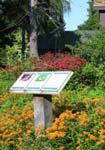
Programs offered at Belding Wildlife Management Area in Vernon include seasonal walks to learn about the plants and animals that can be found on the property. School groups use Belding WMA as an outdoor classroom and to learn about habitats and the species that depend on them. Staff also provide environmental educational programs at area schools and libraries. Several habitat management projects, which focus on special habitats and unique species, are currently in progress at the area. Learn about the Species of the Week.
Wildlife Fact Sheets
Fact sheets about many of Connecticut's wildlife species.
Endangered, Threatened and Special Concern Species Fact Sheets
Fact sheets about some of Connecticut's Endangered, Threatened and Special Concern Wildlife species.
Habitat Fact Sheets
Fact sheets about how to manage habitat to attract wildlife to your property.
Just for Kids
Educational pages with activities, fun facts, and even some coloring pages for kids and families to learn about wildlife together.
Connecticut's Young Forest Habitat Initiative
The Wildlife Division has partnered with other organizations to restore and maintain young forest habitats that are important to a variety of wildlife species.
Living with Black Bears
Find out what steps you can take to avoid problems with Connecticut's growing black bear population.
Bobcats in Connecticut
Learn about Connecticut's top predator and how the Wildlife Division is surveying our state's bobcat population.
Bald Eagles in Connecticut
Help the Wildlife Division monitor bald eagle nests and learn about the Midwinter Bald Eagle Survey.
Monitoring Purple Martin Colonies in Connecticut
You can help by keeping an eye out for banded purple martins starting in spring and reporting them to the Wildlife Division.
Deer Adaptations to Winter and the Effects of Feeding Deer
Learn how deer can survive harsh winters, why you should never feed deer during winter, and the difference between feeding and baiting deer.
Bats in Connecticut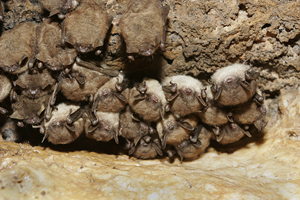
Find out how you can help the DEEP Wildlife Division monitor Connecticut's bat populations. Report your observations of bats around your home and neighborhood by submitting a Public Bat Sightings Form (Word Form / PDF).
Common Shorebirds of Connecticut - An identification guide of shorebirds commonly observed in Connecticut.
Pollinators in Connecticut
You may be familiar with the pollinating habits of bees and butterflies, but there are many others to explore such as flies, beetles, moths, and wasps. All are necessary for the variety of flowers, fruits, and vegetables that we enjoy every day.
Turtles of Connecticut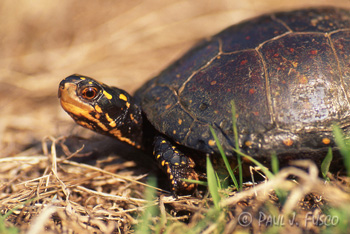
Snakes of Connecticut
Salamanders of Connecticut
Learn about the natural history of Connecticut's native reptiles and amphibians and the conservation issues they currently face.
Snakes in Connecticut - A Guide to Snake Identification
Snake identification guide to help educate people about snakes, thereby minimizing unwarranted concern when a snake is encountered.
Web View Version
Duplex Color Printer Version
Fishing Line Recycling Locations
Find out where fishing line recycling receptacles are located at coastal and inland fishing areas.
Connecticut's Wildlife Action Plan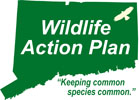
The DEEP Wildlife Division is currently in the process of updating the CT Wildlife Action Plan for 2025-2035. The final version of the 2015 Connecticut Wildlife Action Plan was approved by the U.S. Fish and Wildlife Service in January 2016. This plan establishes both a state and national framework for proactively conserving our fish and wildlife, including their habitats, for the next 10 years.
Freshwater Mussels of Connecticut
Information, fact sheets and a link to Connecticut's freshwater mussel guide.
Wildlife Slide Shows
Collection of on-line slide shows about wildlife and wildlife management in Connecticut.
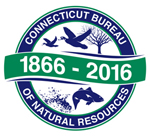 The DEEP Bureau of Natural Resources celebrated 150 Years of Natural Resource Conservation in Connecticut in 2016. We looked back at our history and also forward to the future of natural resources in our state. Check out our historical timeline Connecticut Bureau of Natural Resources Through the Years and see what it was like "Then and Now."
The DEEP Bureau of Natural Resources celebrated 150 Years of Natural Resource Conservation in Connecticut in 2016. We looked back at our history and also forward to the future of natural resources in our state. Check out our historical timeline Connecticut Bureau of Natural Resources Through the Years and see what it was like "Then and Now."
This program receives federal financial assistance from the U.S. Fish and Wildlife Service.
Under Title VI of the 1964 Civil Rights Act, Section 504 of the Rehabilitation Act of 1973, Title II of the Americans with Disabilities Act of 1990, the Age Discrimination Act of 1975, and Title IX of the Education Amendments of 1972, the U.S. Department of the Interior prohibits discrimination on the basis of race, color, national origin, age, sex, or disability.
If you believe that you have been discriminated against in any program, activity, or facility, or if you need more information, please write to:
Office of Diversity, Inclusion and Civil Rights
U.S. Department of the Interior 1849 C Street, NW
Washington, D.C. 20240
Content last updated on February 24, 2024.





